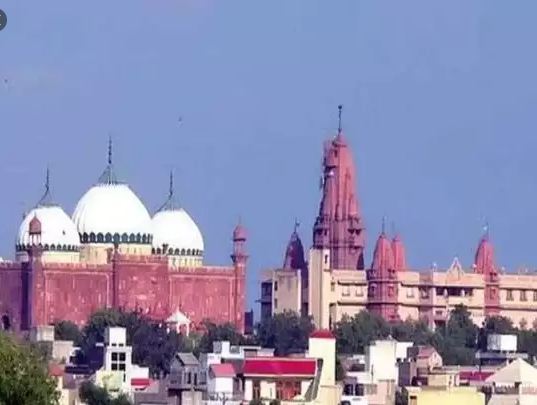Virendra Pandit
New Delhi: After reclaiming the Shri Ram Janmabhoomi for the reconstruction of a magnificent Lord Ram Temple in Ayodhya, the Hindus are taking up ‘liberation’ of the Shri Krishna Janmabhoomi from Muslim control in Mathura in a spirited way in what is viewed as the next step for ushering in an era of Hindu Renaissance.
The Shri Krishna Janmasthan Temple Complex, which houses the proposed Krishna Janmabhoomi Temple, has a group of Hindu temples in Mathura, Uttar Pradesh. These were built around the place where Lord Shri Krishna was believed to have been born. This site holds special religious significance for the Hindus since the 6th century BC.
In the 20th century, the new temple complex was built over decades with financial help from several industrialists. It contains the Keshavdeva Temple, the Garbha Griha Temple at the birthplace, and the Bhagavat Bhavan.
According to Abdullah’s Tarikh-i-Daudi, written during the reign of Mughal Emperor Jehangir, Delhi’s Slave Sultan Sikandar Lodi (1489-1517) had destroyed Mathura and its various temples. He also banned the Hindus from taking a holy bath in the Yamuna River and shaving of heads on its banks.
Barely a decade later, his son Ibrahim was killed in a war against Afghan warlord Babar, who inaugurated the Mughal dynasty by destroying the Ayodhya temple.
In 1618, Raja Veer Singh Deva Bundela of Orchha built a magnificent Krishna Temple in the same place at the cost of Rs. 33 lakh for the devotees. Mughal Prince Dara Shikoh had also patronized it and donated a railing, which was later demolished by Mathura governor Abdul Nabi Khan on the orders of Mughal Emperor Aurangzeb, younger brother of Dara.
On the temple’s ruins, he then got built the Jama Masjid. Later, he also destroyed the Keshavdeva temple in 1670 and built the Shahi Idgah on a part of its area. Its idols were buried beneath the steps of the Jahan Ara Mosque in Agra.
It is this Keshavdeva Temple which is now set to be rebuilt, the way Lord Ram Temple is being reconstructed in Ayodhya.
Now, the petitioners in the Krishna Janmabhoomi case have cited documents challenging the long-standing “settlement” in favor of the status quo. Muslim organizations have claimed this status quo on the basis of a 1968 agreement with what they claimed were “Hindu parties”.
The Hindu petitioners, on the other hand, have cited a 1951 trust deed as evidence that “no Idgah mosque existed in 1947” at the said place.
“Just like the 1991 Act made an exception for Ram Janmabhoomi, exceptions must be made for the Krishna Janmabhoomi and Kashi Vishwanath temples as well. We’re close to victory now,” the BJP’s Rajya Sabha MP, Dr. Subramanian Swamy, said.
Lawyer Vishnu Jain, representing the Hindu petitioners, stated that the Places of Worship Act (Special Provisions) Act, 1991 is “totally unconstitutional”. Both this Act and the Waqf Act are discriminatory laws passed by the Narasimha Rao government in a period of four years.”
Last week, a local court in Mathura admitted the plea seeking to remove the mosque. District Judge Sadhna Rani Thakur fixed November 18, 2020, as the next date of hearing in the sensitive case.
Stating that the 1991 Act did not apply to the Krishnajamabhoomi case, Jain said the judge also observed that in case the Idgah trustees did not approach the court, the Hindu devotees could.
The suit was filed recently by Lucknow-based lawyer Ranjana Agnihotri and seven others on behalf of the child deity, Bhagwan Shri Krishna Virajman. The UP Sunni Central Waqf Board and the Committee of Management of Trust of Shahi Idgah were named as defendants, along with the Shri Krishna Janmabhoomi Trust, Mathura, and Shri Krishna Janmasthan Seva Sansthan.
The petitioners sought cancellation of the decree passed in July 1973 by Civil Judge, Mathura, and recovery of 13.37 acres of land situated within the temple complex.
They have also set up a Shri Krishna Janmabhoomi Nyas to reclaim the land and construct the new temple.

